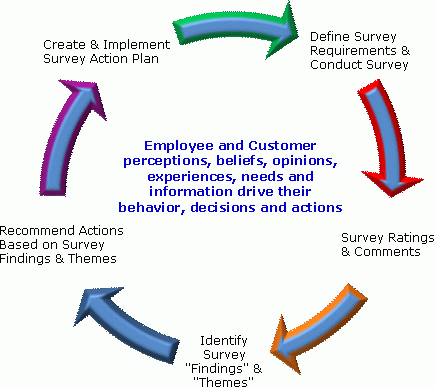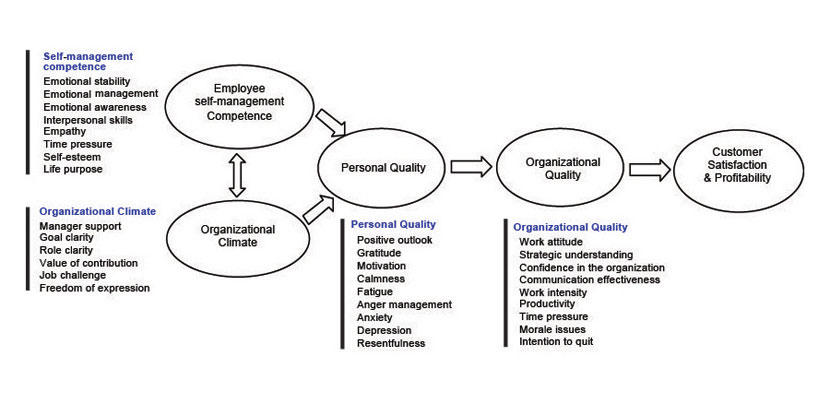Introduction
The global economy has increasingly become competitive. This situation has compelled organizations to generate cultures that promote job satisfaction in an attempt to maintain an active workforce throughout their operations. Various studies have indicated that productivity is directly related to the level of satisfaction of workers, regardless of the positions they hold within an organization. In this context, job satisfaction refers to the gratification within individuals that makes them find pleasure in the duties they perform. It generates self-drive among individual workers.
Topics that address job satisfaction have become inevitable in contemporary organizations. Within a competitive economy, the need to balance between profitability and employee needs in an effort to attain job satisfaction has become a necessity for every vibrant organization. Consequently, organizations have become sensitive in areas that pertain to organizational conduct and work relations. This report explores the various aspects of worker productivity and job satisfaction in the contemporary organization. The aim is to provide appropriate suggestions concerning strategies that managers should execute to enhance productivity and employee satisfaction.
The Facets of Job Satisfaction and their Importance
According to Edelman, Brush, Manolova, and Greene (2010), the various facets of job satisfaction include pay, promotions, coworkers, work approval, and supervision. These facets greatly influence the abilities of the employees to achieve their personal goals. They are crucial determinants of employee motivational levels that create substantial pleasure during task performance. Hearn and Choi (2013) posit that the facets of job satisfaction correlate with the task. Hence, they influence productivity.
A study conducted by Hearn and Choi (2013) to establish the relationship between job satisfaction and individual performance across the various units of LPA Group plc revealed that employees who found their duties pleasurable put comparatively greater efforts to accomplish their performance tasks than those who found their duties unsatisfying. Consequently, pay, promotions, coworkers, supervision, and work are important facets that influence the ability of employees to accomplish individual goals.
For instance, Hearn and Choi (2013) report that the nature of supervision at LPA Group plc has had significant effects on productivity within the various organizational units. Most of the organization’s employees lack self-drive. They only demonstrate their efforts in the presence of their supervisors. In a separate study, Hearn and Choi (2013) revealed that pay and promotion have extrinsic effects that influence employee affection towards their activities in an organization, thereby increasing the chances of job satisfaction.
The Personal Values and Morals of Workers
Personal values and worker morale are crucial factors that determine productivity and job satisfaction in the workplace (Pugh, Groth, & Hennig-Thurau, 2011). Different individuals have distinguishable values and morals that define their inner personalities. These aspects affect the way they conduct themselves in work situations. The organization of LPA Group plc has negatively influenced the values and moral aspects of workers. This situation has further affected the overall productivity of the organization since workers do not exercise the full potential for their duties.
For instance, in the past, the company’s employees presented complaints of unhealthy competition within the different organizational units. Comartin and González-Prendes (2011) emphasize that any disconnect amongst one’s values, morals, and the work and its associated environment creates job dissatisfaction. Comartin and González-Prendes (2011) suggest that nurturing a culture of upright morals and values in an organization through programs such as moral education and encouragement is important for reinforcement of the appropriate attitudes towards work.
Cognitive Dissonance
Cognitive dissonance is a theory that postulates that human beings tend to justify their actions to harmonize conflicting thoughts. The theory is an inherent characteristic that plays a crucial function in decision-making after a person is dissatisfied because of a wrong action towards the accomplishment of some targeted goals and objectives. It helps them regain comfort. Cognitive dissonance is a common phenomenon that occurs within people in the workplace. Often, employees make wrong decisions that pertain to the realization of an individual or even organizational goals.
In this context, many workers at the LPA Group plc seem to experience cognitive dissonance since they try to solve various inconsistent attitudes towards their duties in the organization. Hearn and Choi (2013) posit that many workers in the organization have not experienced comfort in their job positions, owing to a number of management inconsistencies. The subject of cognitive dissonance reveals through numerous complaints that workers have presented before the office.
Reportedly, Hearn and Choi (2013) confirm how the same workers claim to have found comfort in their jobs because of unavoidable needs to run their ordinary personal activates. Since cognitive dissonance seeks to create a false impression about a situation in the mind of an individual, it gets things done in an unusual way. Consequently, cognitive dissonance leads employees to falsified feelings about job satisfaction. This situation reduces the overall performance of an organization due to a reduction in employee morale and self-drive.
Other Factors that may glean from various Academic Articles on this Subject
Stability and Change
Personality literature indicates a natural correlation between the stability and behavioral change of a person. The personality of a person changes over time due to the influence of not only the facets of job satisfaction but also other factors that influence general life satisfaction. Stability and change are crucial characteristics of the personality of an individual that influence management. The factors determine the wellness of employee performance. Although personality is known to be an enduring trait of an individual, experience, moral education, intelligence, and encouragement can affect its stability. Interference with personality stability results in personality change that serves as a springboard for improvement and vice versa.
‘Hedonic Treadmill’
The ‘hedonic treadmill’ is a concept in psychology that holds that people have a tendency to respond promptly and strongly to virtuous and bad occurrences. After some time, these events become their routines. They regain their previous state of personality. In this context, an instance of a pay rise or promotion at the workplace serves as an incentive that enhances employee satisfaction. However, this effect fades with time as the employees learn new challenges and dissatisfaction in the new positions or added responsibilities that are associated with a pay rise.
Hearn and Choi (2013) reveal that LPA Group’s employees have experienced ‘hedonic treadmill’ in the past after pay rise and promotion. For instance, three employees from different units reported that they were very interested in their new positions that also meant new wage brackets. By the time of this research, these employees were very dissatisfied by the nature of responsibilities that were associated with their new jobs, owing to a disconnect that existed between the different organizational units. This prevailing situation has lowered the productivity of the company by approximately 4-percent in the last 2 years.
Recommendations
Various recommendations arise from the above discussion. At the outset, the company should embrace sound knowledge management theories. Van De Voorde, Van Veldhoven, and Paauwe (2014) unveil that proper knowledge management strategies enable the accomplishment of business goals by enhancing employee productivity and job satisfaction. Therefore, I recommend the use of knowledge management theories at PLA Group plc to bring about productivity and satisfaction through the improvement of employee attitudes and their social connections with the management.
Socialization is a crucial facet of generating happiness, a positive attitude, and contentment. Activities such as vacation celebrations, luncheons, and community service play a great role in relieving employee tensions with reference to the creation of positive working relations amongst all employees within an organization. The overall effect of imparting this kind of knowledge in employees is to improve productivity and employee satisfaction. In the following diagram, Hearn and Choi (2013) outline a process that organizations should use to execute proper knowledge management strategies in their attempt to improve employee values and morals that control individual decisions.

Moreover, PLA Group plc should establish employee empowerment programs to improve their attitudes towards the performance of tasks. The process of employee empowerment, as shown in the below diagram, enhances job satisfaction. Satisfied employees have tendencies to offer quality services to customers. Further, such tendencies bring about customer satisfaction. Consequently, the productivity of an organization increases significantly (Van De Voorde et al., 2014). Employee empowerment builds a culture of shared values that facilitate corporate decision-making processes. Hence, it promotes accessibility to alternate decisions. It also elevates the level of self-management that further results in personality stability.

Reference List
Edelman, L., Brush, C., Manolova, T., & Greene, P. (2010). Start-up Motivations and Growth Intentions of Minority Nascent Entrepreneurs. Journal Of Small Business Management, 48(2), 174-96.
Hearn, S., & Choi, I. (2013). Creating a Process and Organization Fit Index: an Approach toward Optimal Process and Organization Design. Knowledge & Process Management, 20(1), 21-29.
Pugh, S., Groth, M., & Hennig-Thurau, T. (2011). Willing and able to fake emotions: A closer examination of the link between emotional dissonance and employee well-being. Journal Of Applied Psychology, 96(2), 377-90.
Comartin, E., & González-Prendes, A. (2011). Dissonance Between Personal and Professional Values: Resolution of an Ethical Dilemma. Journal of Social Work Values and Ethics, 8(2), 5-4.
Van De Voorde, K., Van Veldhoven, M., & Paauwe, J. (2014). Relationships between work unit climate and labor productivity in the financial sector: A longitudinal test of the mediating role of work satisfaction. European Journal of Work & Organizational Psychology, 23(2), 295-309.